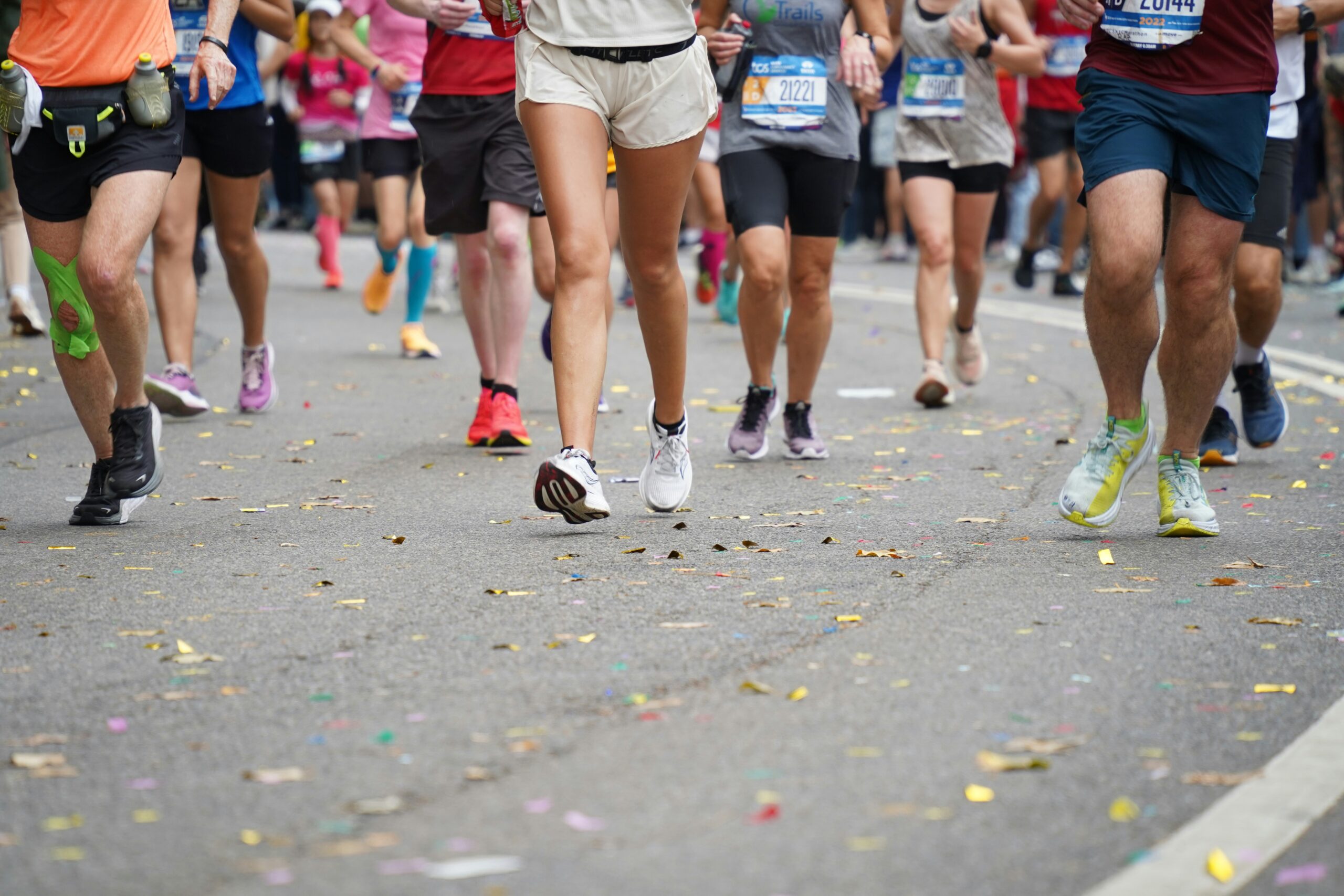ENQUIRIES CALL: 0116 270 8447
If you’re a runner you may already have heard of gait analysis. If not, read on to find out how having your gait analysed is a useful tool for runners of all abilities.
Gait analysis is the study of how you move when you walk or run. When running it’s useful for identifying areas of concern in form or style to improve performance, prevent injury and inform the type of shoe you select.
A gait analysis involves observing or measuring various aspects such as your foot strike, stride length, cadence, posture, alignment, and balance. It can be done in different ways: visually with a treadmill and a video camera, using a pressure plate, or with a wearable device. Each analysis technique will be for a different purpose and objective.
Types of gait analysis
1. Visual assessment
A biomechanics podiatrist or a running coach will usually work visually, observing in real time how you stand or the way you move. This is known as your “form”.
They evaluate areas for improvement or concern in your posture and alignment. When running they’re often looking at hip position and knee lift leading to foot strike. Essentially, it’s gaining running efficiency and power and reduced issues.
Running on a treadmill in front of a video camera is useful for shoe selection and injury prevention. Using a slow motion recording of your running gait enables observations on your foot strike position and foot roll (pronation).
Variations in gait come from where strike occurs. This could be:
- at the heel, midstride or forefoot,
- how rolled out (supinated) the foot is,
- how much the foot and ankle pronates,
- how dynamic this is and
- how rotated the foot ankle position is when pushing off.
2. Pressure plates
Pressure plates are generally static load analysis showing pressure loads distribution difference to the left to right foot. Orthotist often performs the analysis to help manufacture orthotics.
3. Wearable devices
Wearable devices, often on watches, monitor the balance between your left and right foot ground contact time.
Benefits of gait analysis
1. Shoe selection
Gait analysis can help you choose the most suitable types of shoes for your running needs.
Depending on how your foot rolls when you run, you may need shoes that offer more or less cushioning, tortional stability, pronation stability, midsole stack and drop, or flexibility.
Gait analysis can also help you find the right size and fit for your shoes, as your feet may swell or change shape during running.
2. Injury prevention
Gait analysis can help you prevent or recover from injuries by identifying and correcting any biomechanical flaws or imbalances. These can cause stress or strain on your muscles, joints, or ligaments.
For example, if you overpronate (your foot rolls inward too much), you may be prone to shin splints, knee pain, or plantar fasciitis. Gait analysis can help you adjust your foot posture or use orthotics to reduce the impact.
3. Performance improvement
Gait analysis can help you improve your running performance by optimising your efficiency, speed, and endurance.
By analysing your gait, you can learn how to run with a smoother, more natural, and more economical motion. You can also learn how to improve your cadence, stride length, and power output.
A useful tool for any runner
Gait analysis is a useful tool for runners of all levels and abilities, as it can provide you with valuable insights and guidance on how to run better. We offer free gait analysis with every pair of running shoes bought in our Leicester shop. Call into the shop at 146a Clarendon Park Road or give us a ring to enquire about gait analysis on: 0116 270 8447.
However, it’s not a one-time thing. Your gait may change over time due to factors such as age, weight, fitness, or injury. It is recommended that you have your gait analysed at least once a year, or whenever you change your shoes, your training, or your goals.
Remember, a good running gait can make a big difference in your running enjoyment. Happy running!

